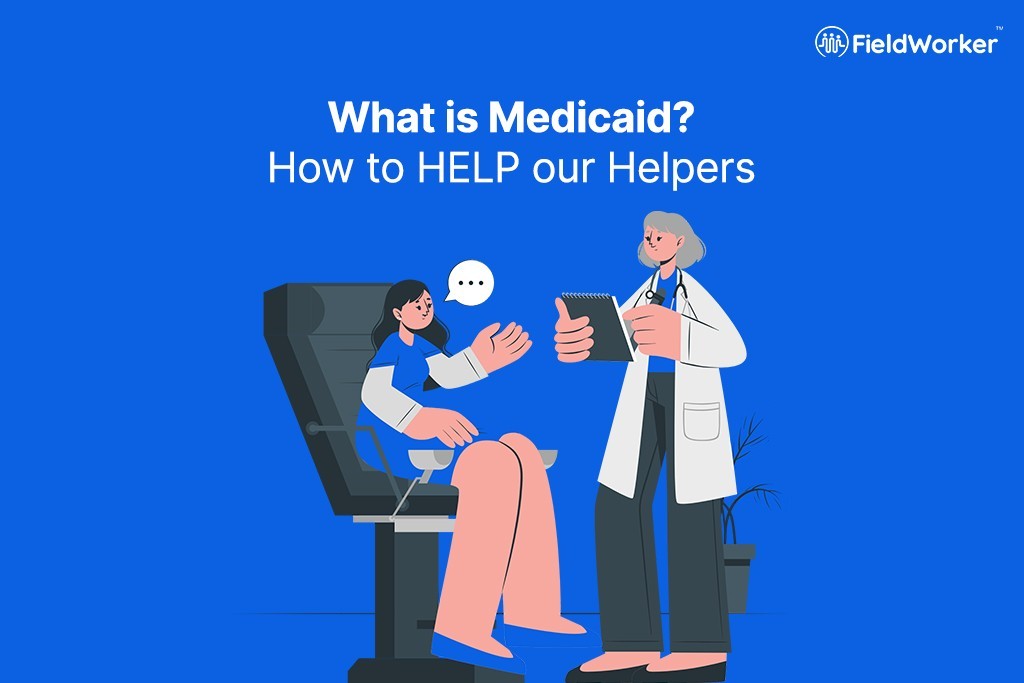Medicaid, is the main source of financing for low-income residents to cover their long-term and health care needs. It represents one out of every six dollars spent for health care in the country. Together with the federal government, it is both funded and administered by the state government.
People sometimes mix-up Medicaid and Medicare. Although both are government healthcare programs helping people acquire coverage, the similarities end there. The reimbursement structures differ significantly depending on the state and program.
HHS describes Medicaid as an assistance program, whereas it marks out Medicare as an insurance program. In this article, we will dive deep into what Medicaid is and solutions for Medicaid related programs.
Medicaid Eligibility
Medicaid coverage has always been defined by states – that is who is eligible and who is not. It’s estimated more than half of all Medicaid expenses is attributed to the elderly and people with disabilities. However, the program covers individuals generally of low income, which also includes:
- People under 19 years old
- Elderly individuals – 65 or older
- Special needs and disabled individuals
- Adults/Parents taking care of a child
- Adults without children who are dependent
- Immigrants who are eligible
- Pregnant ladies
Medicaid has a counter-cyclical factor that should be taken into consideration. Where people who enrol during economic downturns may become more eligible. Although, the downside is the state will find it hard to fund the state’s share because of the decline in revenue.
Dual eligible beneficiaries (people enrolled in both Medicaid and Medicare) account for almost 34% of all the expenditure. Plus, it is estimated only 5.5% of enrollees actually utilize the support and long term services. Accounting for almost 1/3rd of Medicaid spending just on benefits alone.
Since Medicaid is a state-sponsored and federal program assisting with the health care costs of low-income individuals. Situations like the on-going pandemic have definitely impacted Medicaid enrollment and financing.
Light at the End of the Tunnel: Compensation with Medicaid.
Recently, a 25% Medicaid reimbursement rate bump has given hope to some assisted living providers. This was called out recently by the New Jersey senior living associations. Read more on this here.
Kathy Fiery, the vice president of Assisted living in the Health Care association of New Jersey (HCANJ). Ended up admitting this was one of the toughest years for Medicaid buildings. In addition to the additional expenses being acknowledged. She was especially glad Medicaid buildings of high-occupancy were being recognized through the legislature.
The legislature recently signed by Garden State Gov. Phil Murphy provides a supplemental allotment of $3 million to the DHS (Department of Human Services). That gives a 25% increase temporarily for assisted living facilities, residences as well as personal care homes participating in the Medicaid programs.
Communities utilize this money to help with wage increase for certified nurse aides providing direct care. Together with supplemental pay rises and being prepared for COVID-19 surprises.
Vice President John Indyj of (HCANJ) indicated there is much relief for Medicaid Occupancy facilities in urban areas. Most were struggling to pay 3 dollars above minimum wage before the legislature was introduced. Thus, it can be deciphered that more legislation is being adopted to help funding in the future.
Kathy Fiery was also grateful for the additional funding given to the Assisted living providers. She stated that besides a few weeks of funding (For COVID-19 testing), they did not receive any financial relief.
Medicaid Programs Require EVV in Place
Along with the relief given to Assisted living providers recently. There are EVV requirements in place for Medicaid programs. For more on EVV (Electronic Visit Verification), or information on the September 30th deadline, click here.
The EVV Requirements passed at the end of 2016 in the 21st Century Cures Act; include everyday support for everyday activities like:
- Meal preparation
- Medication/Shopping
- In-home visits
- Managing money and more
The crux of the matter is State Medicaid programs must implement EVV in their states – or they could expect less Federal Medicaid funding. Click here for more on the deadline dates for each state.
Medicaid Assisted Programs Could Use a Break – Fieldworker
Assisted living providers and others in the Health care sector sometimes can’t seem to catch a big-break. The nature of their work demands a lot from them and they are always considering alternative options for their career. Read more on Employee Retention.
One way to bridge the gap is taking a load off their mind’s with less paperwork, easier ways to access patient data and more. Allowing the people associated with the programs to spend more time with their families.
One device accomplishes the above. According to Bolatito Jacobs, the Founder and CEO of CFYNSS. “With FieldWorker, our first employee and client were up and running on the system on the very first day. The value of the solution and proactive support were important to us, and FieldWorker also supports EVV which will soon be a requirement in our state. We also saw that several large agencies had been advising FieldWorker in the development process.”Beyond just shouldering the burden for ASP’s and health care agencies with limited funding. FIeldWorker’s suite of features can transform the way you manage your agency. Along with keeping up with state-mandated requirements (HIPAA Compliant), up-to-date call logs, EVV records and more. Solutions like FieldWorker can aid Medicaid relief efforts with its user-friendly options and reliability. Read here for more.
